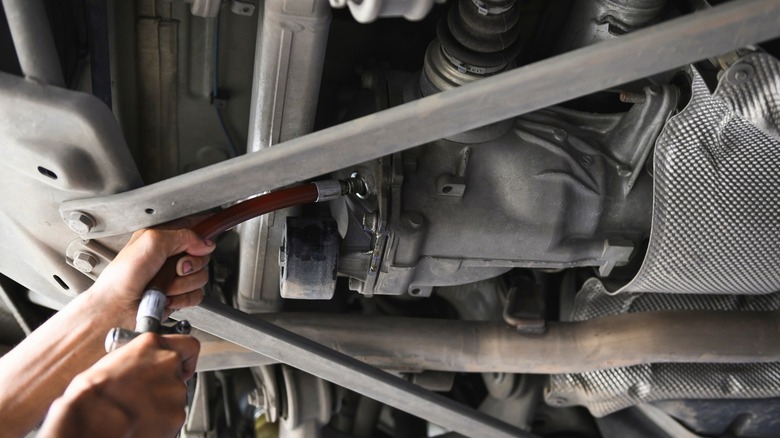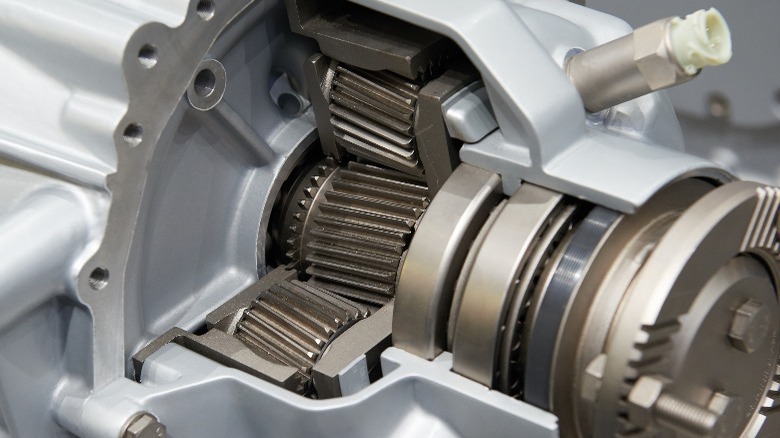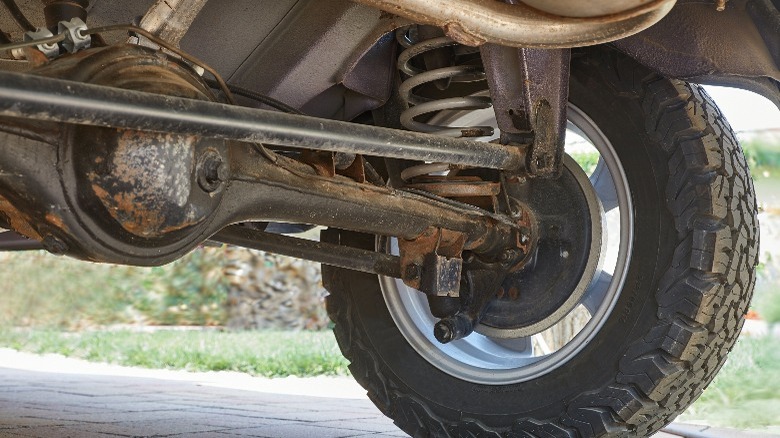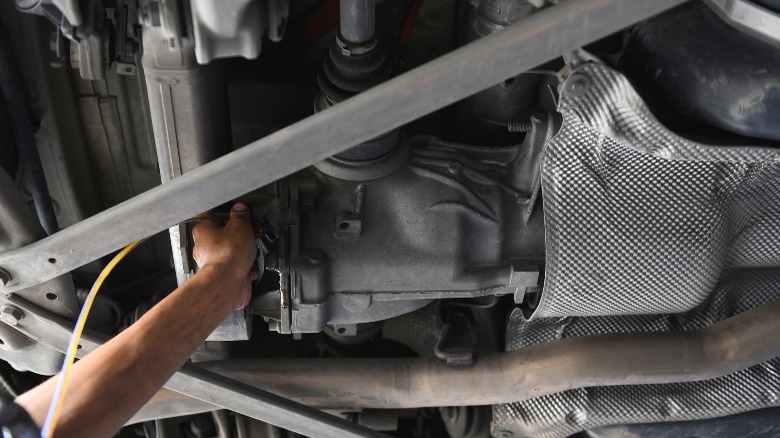How Often Do You Actually Need To Change Your Car's Differential Oil?
As far as car fluids go, differential oil is one of the most neglected pieces of maintenance. It could be because the effects of not changing differential fluid on time aren't as immediately obvious as other fluids like engine oil and coolant. Still, it doesn't mean it's unimportant.
A car's differential is essentially a group of gears that allow the inner and outer wheels of the drivetrain to spin at different speeds. If the wheels can only spin at the same speed, it will cause slipping, making it difficult to maintain control while cornering or turning. You'll find the differential in FWDs in front (transaxle), RWDs at the back, and AWDs and 4WDs have more than one. These gears need to stay lubricated. Otherwise, the differential could damage or malfunction, and your car's handling will suffer.
Since most cars aren't offroad SUVs or trucks that expose the differential to water and mud, nor are they towing machines that put a lot of stress on the differential, many car owners can seemingly get away with not changing the differential oil on time (or at all). However, there are recommended checkpoints in your car's mileage where it's time to crack open the housing, drain the oil, clean the housing. and inject a new oil.
When should you change differential oil in an FWD and RWD?
FWD — front engine, front wheel (FFs) — cars generally have the differential and the transmission in the same housing, referred to as a transaxle. So, the same transmission fluid lubricates both sets of gears. You must consult your car's user manual to determine how often you need to change this transmission fluid. Using Honda as an example, experts there will tell you to change transmission fluid every 50,000 miles to keep it in pristine condition, but this number varies depending on your car's make and if you have an automatic or manual transmission. The same applies to all cars that have engines with the same position as the drivetrain (MRs, RRs, and FFs).
As for RWD cars with the engines in front (FR), you mostly don't need to worry about changing the differential fluid often. Car manuals often don't even mention differential fluid (after quick looks at the Ford Mustang's and BMW i7's owner manuals). This differential fluid is meant to be a "lifetime fluid," meaning you should be covered as long as you have the car without any need to change it. But if you use your RWD (SUV, truck, or car) for towing, offroading, or as a performance vehicle, consult your mechanic to inspect differential oil earlier because it's seeing more stress than it was designed for.
What about the differential fluid in AWDs, 4WDs, trucks, and SUVs?
Differential fluid, even on cars that stress their differentials, doesn't need nearly as regular a change as something like engine oil. Based on mileage alone, engine oil should be inspected or changed every 7,500 to 10,000 miles, depending on your car manufacturer's specifications. However, the recommended checkpoint to change differential fluid varies depending on the manufacturer and your car's drivetrain. Ford's 2009 Scheduled Maintenance Guide (PDF), for instance, recommends that you change the differential fluid at 150,000 miles for 4x4s.
The mileage checkpoint varies depending on just how much stress you put on your vehicle. For example, Toyota mechanics would tell you that 30,000 miles is enough time to start looking at your differential fluid. The first 30,000 miles is an important checkpoint because that has given the new differential gears enough time to "break in," and there's likely to be a lot of metal shavings from it. Trucks and SUVs generally put more stress on differentials because they are often used for towing and offroading.
As for AWDs, we took a look at the 2020 Lexus IS250's owner manual, which says you should change differential fluid (among other fluids) after encountering a flooded road. In that same vein, exposing your car to a lot of moisture, mud, and road salts could contaminate and break down your differential oil, so you should check it often if you drive there.
How to change the differential fluid in your vehicle?
The best thing to do is give your car to a recognized expert to change your differential fluid. It could be a complicated process if you aren't mechanically inclined. You can consult your owner's manual to see what kind of oil is recommended for your vehicle, buy it, and give it to someone to do it for you (so all you have to pay for is labor).
If you want to do it yourself, most cars have drain and fill plugs on the differential housing. Raise the car with a jack, drain the oil into a pan, and open up the housing. Be careful to mark exactly which holes the bolts you removed come from. Next, you should use the opportunity to clean the casing. There should be a magnet to catch all the stray metal shavings; remove the metal from there and clean the casing (you can use a brake parts cleaner spray). Put the parts back together and put the bolts where you removed them from.
Of course, this is simply a general guideline. The methods will vary depending on your car's brand and age. Once again, consult your owner's manual or an experienced expert before you do this.



